
Here's another one of my tutorials. This time it's all about my still life macro technique for cut flowers.
The lenten rose is a great long lasting flower in the winter and early spring garden and it’s a good subject to photograph. It does have the habit of having nodding flowers which are not as easy to photograph especially when the stems are shorter at this time of year.
The only way I could photograph them was to pick a stem and bring it indoors.
Inside it didn’t matter about the cold, the moisture or the wind. I could control everything without having to lie down on the wet cold ground.
Earlier in the week I was shooting witch hazel blooms indoors with artificial light and I wasn’t happy with the colour saturation of the petals. This time I wanted to work with as much of the natural daylight in the room as possible.
Still Life Macro Technique - Studio Set Up
- I placed white cardboard facing the window. As a result it reflected the window light back on to the lenten rose petals.
- I chose a nice paper napkin background. Then stuck the napkin to a piece of cardboard with blue tack.
- I used a white base to reflect any light upwards.
This was all that was needed to give me the ambiance I was looking for.
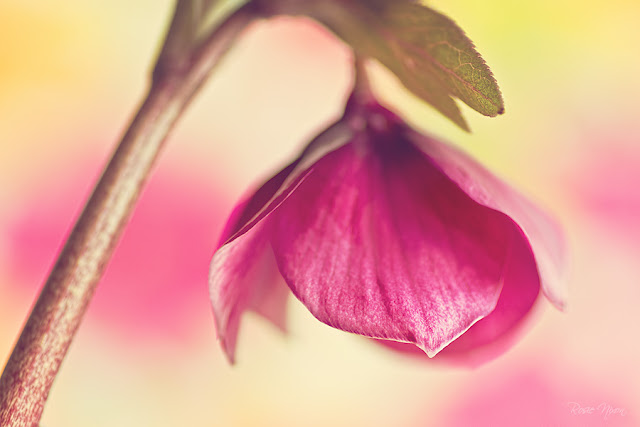
Still Life Macro Technique - Getting Blurry Backgrounds
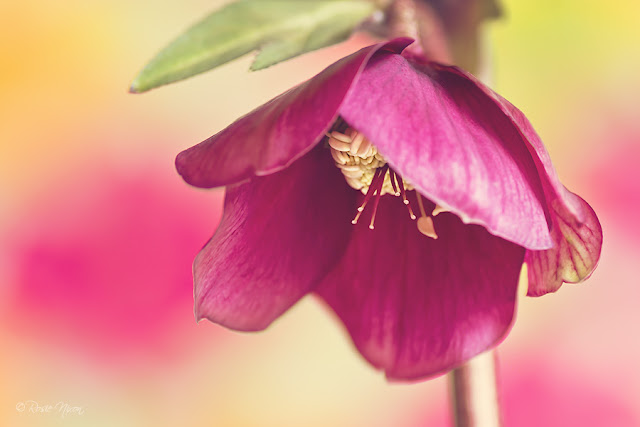
To get the background blurry you need to shoot wide using apertures around f1.2 – f3.5 or else make sure that your background is far away from your subject. The closer it is to the flower the more detail from the background will show on your photos.
- A tripod is always required in these situations as I’m using very slow shutter speeds.
- I use live view to manually focus and magnify the screen for precision focusing.
- I also use mirror lock up to prevent vibrations inside the camera with a 10 sec timer delay.
Hellebores as cut flowers for still life photography
Cut a nice thick stemmed flower from the garden but don't cut too many stems as you want them primarily to be in flower in the garden!
Once indoors cut the stem a little more at the base. Then burn the end of the cut stem over a flame for about 5/6 seconds.
Place in water with the water covering all the stem.
Bring them out of the water to photograph. Don't leave them too long out of the water.
Try to shoot the flowers all on the same day if they are going to be part of a series of images to be shown together. No matter how careful you are some flowers adapt better than others to being cut. Changes in petal hue and pigmentation can develop overnight.
Wilting Stems?
If you find the stem still wilting after 24 hours - cut it again without burning the end and replace the water with hot tap water. Be careful it's not too hot for your hands. Plus be careful of the type of vase you're using as you don't want a precious vase cracking. The stem might revive itself though some do and some don't.
The alternative is to cut the flower off the stem. Then float it with other hellebore flowers in a shallow dish of water. It's hard to photograph 1 flower in a small bowl as it moves around too much in the water. Therefore a group is better as they don't have the room to move.
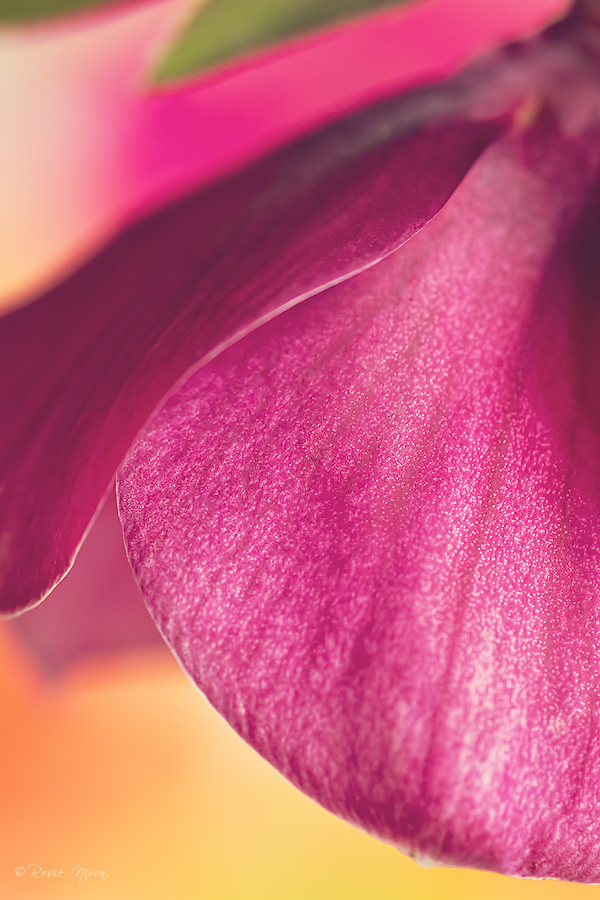
Camera details
- lens: 90mm f2.8 macro 1:1
- shutter speed: 0.125s approx as the light kept changing
- ISO: 400 (you could go much higher depending on your camera)
- manual mode
- manual focus
- raw (using a canon neutral picture style so that the preview image is a closer representation of the raw on the LCD camera screen)
Post processing details
- degrees of kelvin adjusted in adobe camera raw to remove the blue colour cast
- increase in clarity and contrast
- noise reduction
- a vintage feel given to each of the images



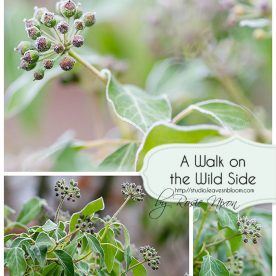
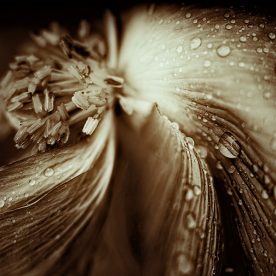
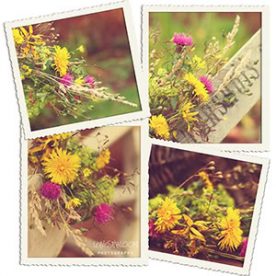

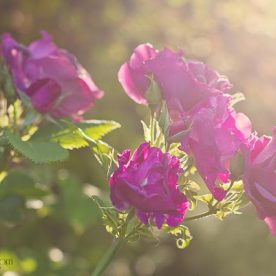
Gardening in a Sandbox
Hi Rosie: gorgeous photos and very informative information for photographing thes lovely blooms. Our Hellibores are buried under a huge mound of snow and won't appear for months yet. Valerie
Ellie
Hello Rosie, such beautiful pictures of your lovely rose. I do love macro flower shots :)) Thanks for all the info you have shared here. I can hardly wait for this horrible weather we are having just now so that we can get out and about again. Hope you had a lovely Christmas and New Year.
Rosie Nixon
I hope the snow has melted now 🙂 Val and thanks for the visit
Rosie Nixon
Hi Ellie and thanks for the visit. We had a lovely relaxing Christmas here – not so sure what's better rain or snow!